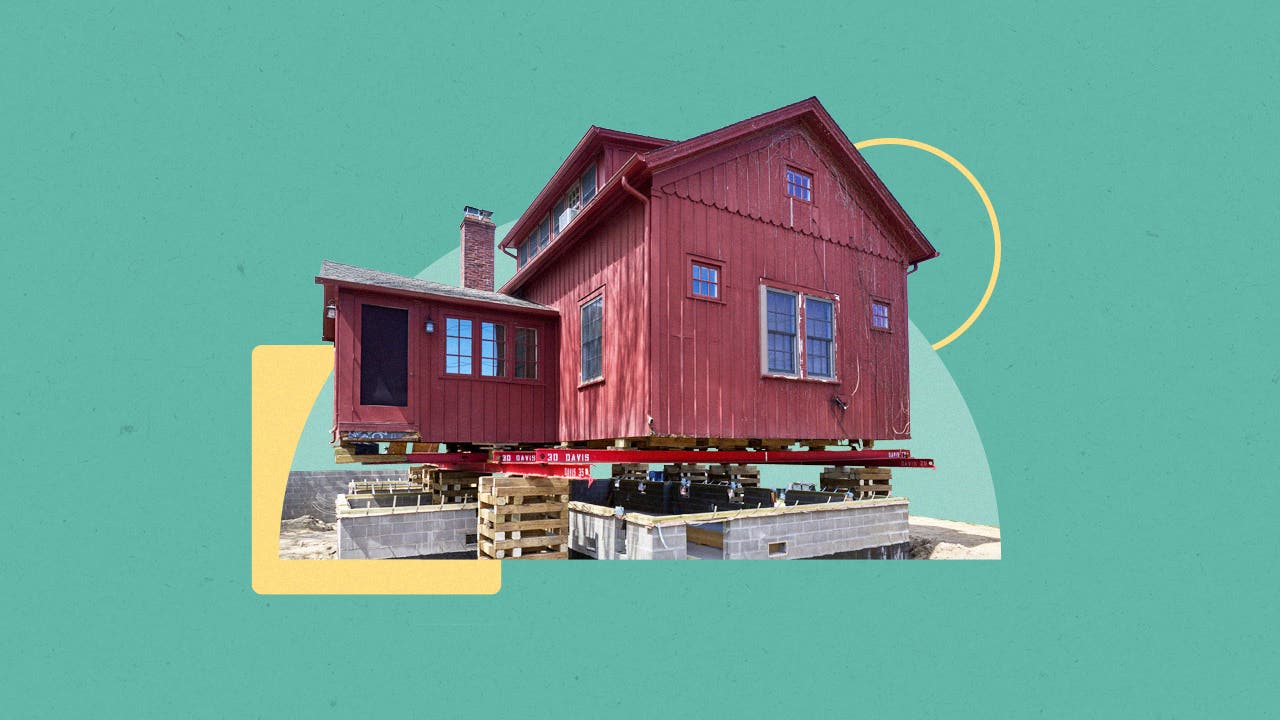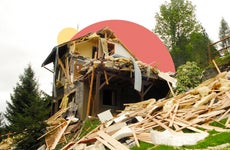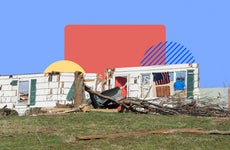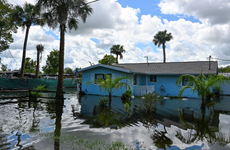81% of Americans say extreme weather is costing them more. How will it affect your home costs?

The Bankrate promise
At Bankrate we strive to help you make smarter financial decisions. While we adhere to strict , this post may contain references to products from our partners. Here's an explanation for .
Key takeaways
- Extreme weather has been creating headaches and higher electric bills for homeowners.
- Insurance premiums are also increasing, and in some places, finding a homeowners’ policy at all can be challenging.
- Homebuyers are starting to focus on climate concerns and the heightened risks of ownership in certain parts of the country.
You know how much you’re paying for your home — the outstanding amount on your monthly mortgage statement is a constant reminder. However, housing costs aren’t just about principal and interest. Owning a home requires a consistent commitment to keeping it in good shape, too, and that’s getting a lot more expensive due to changes in the environment. Bankrate’s recent Severe Weather Financial Impact Survey reveals that 81 percent of U.S. adults have faced higher costs over the past decade due to weather-related issues.
An increase in damaging floods is one alarming example. “Flooding isn’t just a problem for East Coast and Gulf Coast communities,” says Loretta Worters, vice president of media relations at the Insurance Information Institute. “Inland flooding also is on the rise. In August 2021, Hurricane Ida brought heavy flooding to the Louisiana coast before delivering so much water to the northeast that Philadelphia and New York City saw flooded subway stations. Floods in eastern Kentucky in 2022 further underscored the need for more comprehensive planning on how to deal with these disasters.”
Flooding is not the only concern, though: Bankrate’s survey shows that higher energy costs are the most common reason for higher homeownership expenses. And that 57 percent of Americans believe that, one way or another, climate change and extreme weather will have a negative impact on their finances over the next 10 years.
How extreme weather impacts the cost of homeownership
Extreme weather can lead to extremely pricey damage. And according to Bankrate’s 2023 Emergency Savings Report, more than half of Americans are uncomfortable with how much they’ve stashed away in their emergency funds. In fact, 22 percent reported having no emergency savings at all, which means that a lot of homeowners could be one hailstorm or blizzard away from a nightmare of figuring out how to pay for necessary repairs.
Keep in mind: Extreme weather damage, or even just the risk of it, can impact resale value when you’re ready to sell your house.
Weather-related disasters can also spell disaster for property values. When a home is for sale, the risks of major weather events can be a turn-off for prospective buyers and negatively affect the amount they’re willing to pay for it. That’s especially true if the home is located in a flood zone — a fact you’ll likely be legally obligated to disclose to any potential buyers.
- 57 percent of U.S. adults have incurred costs due to an extreme weather event over the past 10 years, according to Bankrate’s Severe Weather Financial Impact Survey.
- 72 percent experienced higher-than-normal electricity bills last summer, and 53 percent reported that it put a strain on their finances.
- 57 percent expect that climate-related costs will have a negative impact on their finances over the next decade.
- 83 percent of homebuyers said they consider climate risk when shopping for a home, according to a recent report by Zillow.
Utility bills
When the temperature rises, so do electric bills. Consider Nevada, where residents are used to a desert climate but have had to endure some unusually brutal temperatures recently. In July 2023, the Las Vegas area set a new record high for scorching heat with the hottest month ever recorded by the National Weather Service. The thermometer reached at least 110 degrees on 17 days of the month, which will certainly make you want to crank that AC all the way up.
Nevada isn’t alone, either. According to data from the National Oceanic and Atmospheric Administration, 28 states had top-10 warmest-on-record first halves of the year, and Florida experienced its hottest January-July period ever. The lesson is simple: No matter where you live, be prepared to deal with higher cooling costs.
Insurance premiums
As climate change fuels more extreme weather, homeowners in frequently affected areas are feeling the pressure of high premiums. In hurricane-prone Louisiana, for example, Bankrate data shows that the average cost of homeowners insurance is almost 40 percent higher than the national average.
For homeowners in coastal areas, designated flood zones or other regions with a heightened risk of flooding, the cost of insurance can be even higher. That’s because most standard homeowners policies do not cover flood damage — to protect against that, you need to purchase a separate flood insurance policy.
Repair costs
If you find yourself in a worst-case scenario after a major weather event, be prepared to feel the impact on your wallet. For example, removing a fallen tree after a storm can cost up to $2,000, according to Angi, while HomeAdvisor data shows that cleaning up a flooded basement can run as high as $15,000. Damage from hail and wind can be even costlier.
Unprecedented rainfall in California last year is one example of the need to be prepared in case of emergency. “With the heavy rains in Northern California last winter, many homeowners experienced surprise water issues, including roof leaks and flooding crawl spaces,” says Vishwas Prabhakara, founder and CEO of Honey Homes, an online platform that helps homeowners connect with handymen. “Emergency mitigation in these situations, especially during off hours, can be very costly. Reputable vendors will reasonably charge two times their regular rate, while others may charge even more. In addition, supplies, such as sump pumps and tarps, can be in short supply.”
Ways to protect your home from extreme weather
Common-sense home maintenance and upkeep can both help protect your home and save you money. “Maintenance in service of prevention is critical,” Prabhakara says. In Southern states, for example, it may be wise to have your HVAC system serviced in the spring to spot any potential issues before a heat wave kicks in. In areas where wind creates persistent concerns, keep the exterior and yard clear and free of debris. “Cleaning gutters, ensuring ground drains are cleared and thinning outdoor foliage that could break loose and pose a risk during windy weather are all important steps to take,” he says.
Most importantly, learn from the past and keep tabs on how your home has fared during previous weather challenges. “Taking stock of how your home’s key exterior components — including your roof, gutters, windows and foundation — fared during the seasonal transition period, and ensuring any needs are addressed, will go a long way to minimizing the cost of repairs,” Prabhakara says.
Related Articles

Spring homebuying season is all but canceled — but will it hurt home values?

Extreme weather’s financial impact on drivers and homeowners

Survey: 81% of Americans say higher energy costs or extreme weather have impacted their wallets

The consequences of extreme weather on property values and pocketbooks